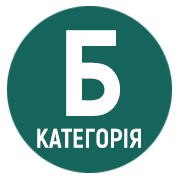MARKED VOCABULARY IN FICTION
DOI:
https://doi.org/10.32782/2412-933X/2025-XXIII-24Keywords:
marked vocabulary, stylistic differentiation of vocabulary, socially marked vocabulary, chronologically marked words, territorially marked vocabularyAbstract
The article examines marked lexical units of the modern Ukrainian language. Despite a significant number of works, the issue of stylistic differentiation of vocabulary remains unresolved in scientific literature. Based on the synthesis of views formed in general and Ukrainian linguistics, such concepts as “marked vocabulary”, “stylistically marked vocabulary” are considered, and groups of marked words are identified. The work was carried out on the material of the novel by Liuko Dashvar “#Halyabezholovy”, which has not yet been the subject of research. The purpose of the work is to characterize the marked vocabulary of this work of art. It was found tht stylistically and socially marked lexical units prevail in the novel. Within the stylistically marked vocabulary, the largest group is made up of colloquial words represented by different parts of speech, and ironic, familiar, derogatory, vulgar lexemes are also found. Many words have double marking, as they combine different meanings: colloquial and abusive, derogatory and abusive, vulgar and abusive, etc. The dependence of the expression of different shades of the meaning of a word depending on the context has been observed. Stylistically marked words give the narrative simplicity and some expressiveness. The writer uses socially marked vocabulary to reproduce lively non-literary speech, while at the same time indicating the social status of the characters, their cultural level, etc. The semantic structure of socially marked words often combines meanings that belong to different groups of vocabulary, as evidenced by their codification with double or even triple marking, many of them also have additional emotional and expressive shades. The novel also reveals obscene vocabulary and mixed language (surzhyk). Using them, the author most accurately reflects the realities of different groups in society. Chronologically (archaisms, neologisms) and territorially (dialecticisms) marked lexemes in the studied novel occur less frequently. The conclusions are drawn that marked vocabulary in a literary text is an important means of creating a national-linguistic flavor. Reproducing all the nuances of modern social speech communication as accurately as possible, Liuko Dashvar masterfully introduces marked vocabulary into the fabric of a work of art, influencing the emotional sphere of the reader.
References
Єрмоленко С.Я. Нариси з української словесності (стилістика та культура мови). Київ : Довіра, 1999. 431 с.
Кабиш О.О. Зміни в семантичній структурі та функціонуванні маркованої лексики : автореф. дис. … канд. філол. наук : 10.02.01 ; Національний педагогічний університет імені М.П. Драгоманова. Київ, 2007. 21 с.
Словник української мови: в 20 томах. URL: https://sum20ua.com/.
Словник української мови: в 11 томах / за ред. І.К. Білодід ; Інститут мовознавства АН УРСР. Київ : Наук. думка, 1970–1980.
Ставицька Л.О. Короткий словник жарґонної лексики української мови. Київ : Критика. 2003, 334 с.
Ставицька Л.О. Про взаємодію жаргону і сленгу. Сучасний український інтержаргон: проблеми й аспекти вивчення : доповіді та повідомлення ІV Міжнародного конгресу україністів. Мовознавство. Київ : Пульсари, 2002. С.213–216.
Ставицька Л. Українська мова без табу. Словник нецензурної лексики та її відповідників. Київ : Критика, 2008. 454 с.






